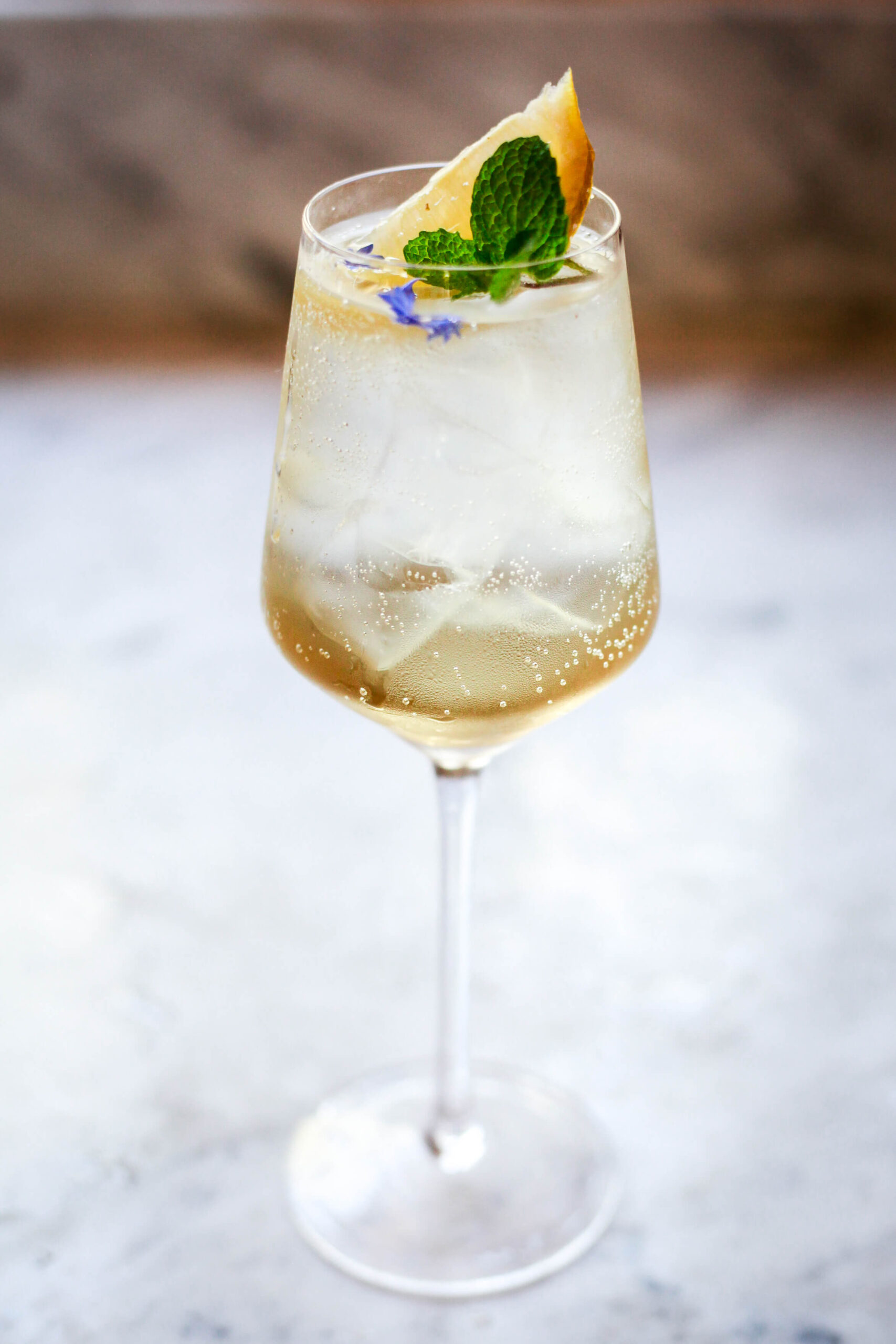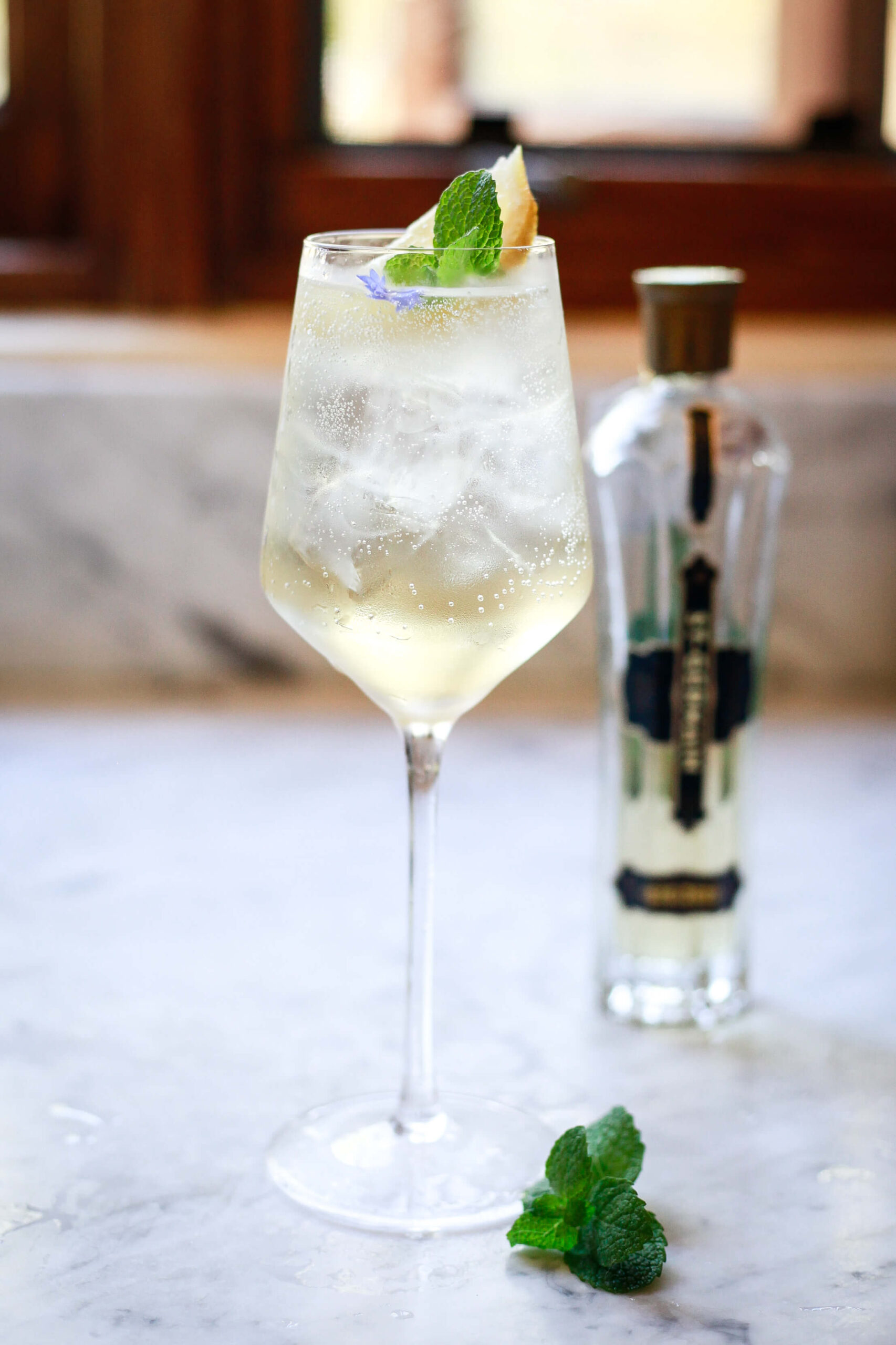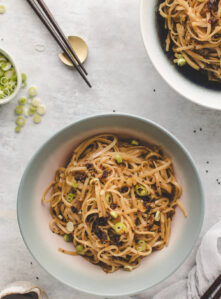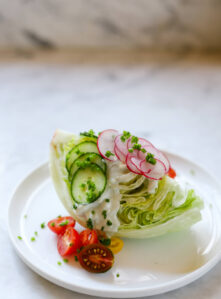Hugo Spritz
If you’re looking for a refreshing cocktail that feels a little more chic than your average spritz, let me introduce you a current favorite: the Hugo Spritz.
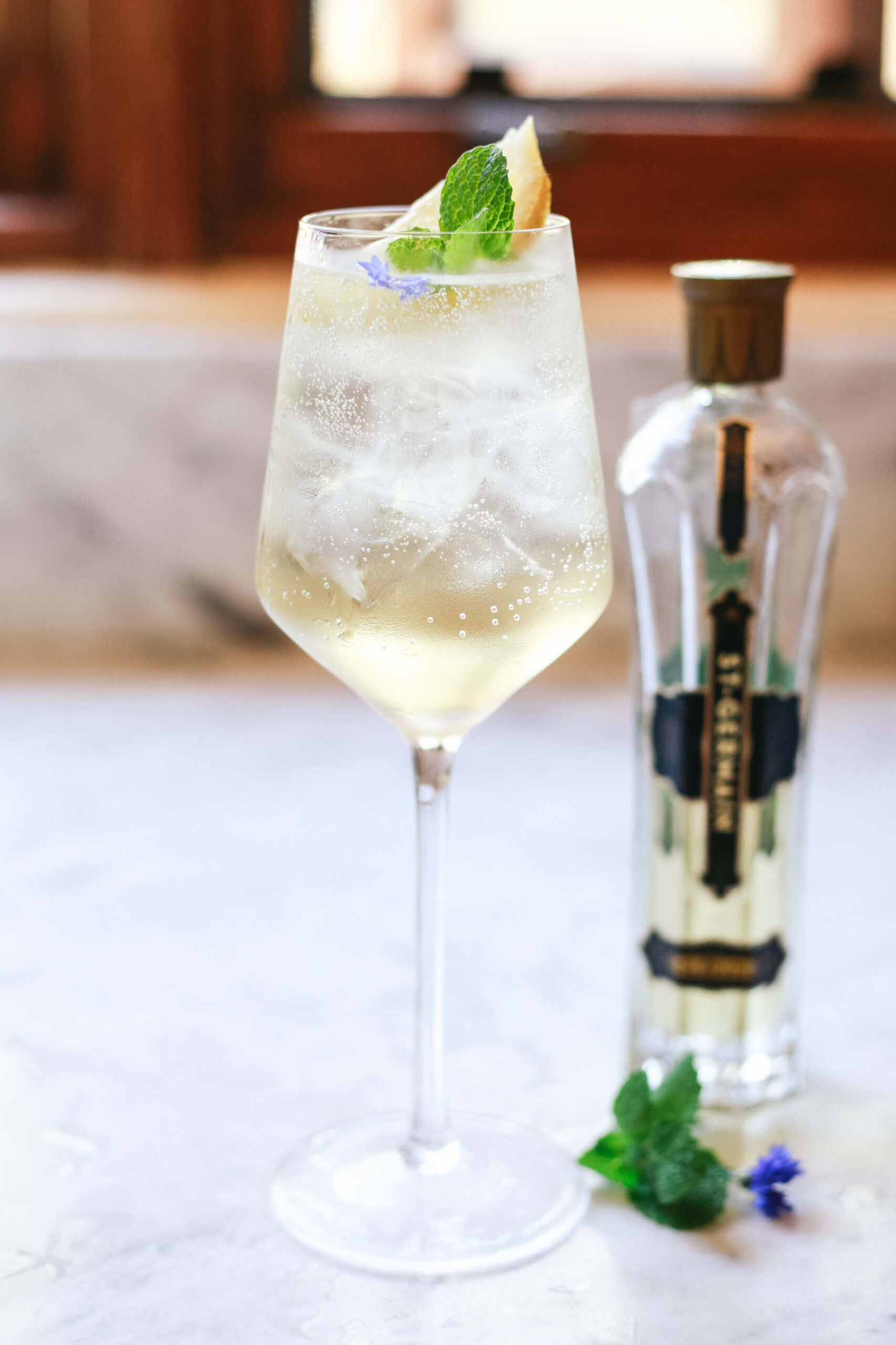
This bubbly Italian cocktail has been showing up everywhere lately, and for good reason. Made with St-Germain elderflower liqueur, Prosecco, a splash of sparkling water, and fresh mint, it’s light, floral, and just the kind of drink I want to sip on a warm afternoon. Think of it as the Aperol Spritz’s softer, more delicate cousin.
What is the Hugo Spritz?
The Hugo Spritz originated in Northern Italy and quickly became a staple of the aperitivo culture. Where the Aperol Spritz leans towards bitter and citrusy notes, the Hugo is bright, floral, and slightly sweet, thanks to the addition of St-Germain. Fresh lime juice and mint balance it out, resulting in a bubbly, refreshing, and elegant drink — without being fussy.
St‑Germain Spritz vs. Hugo Spritz
You might be wondering: what’s the difference between a St-Germain Spritz and a Hugo Spritz? Both highlight the elderflower liqueur, but the Hugo is distinct because it always includes lime and mint. Those extra touches give it a lively, garden-fresh flavor that instantly transports you to an Italian patio in the Alps.
Hugo Spritz vs. Aperol Spritz
Both cocktails are built on the same idea — Prosecco plus a liqueur — but they couldn’t be more different in personality. Aperol Spritz is bold, orange, and slightly bitter. Hugo Spritz is soft, green, and floral. If you prefer lighter, more refreshing flavors, the Hugo Spritz might just win your heart. (And for a pretty variation, try it with rosé Prosecco — a Hugo Rosé Spritz is stunning and perfect for holidays.)
What Type of Wine to Use
The classic Hugo Spritz calls for a dry Prosecco — its crispness balances the sweetness of elderflower liqueur. That said, this cocktail is adaptable. Rosé Prosecco brings a festive pink hue, and cava or any dry sparkling wine will also work.
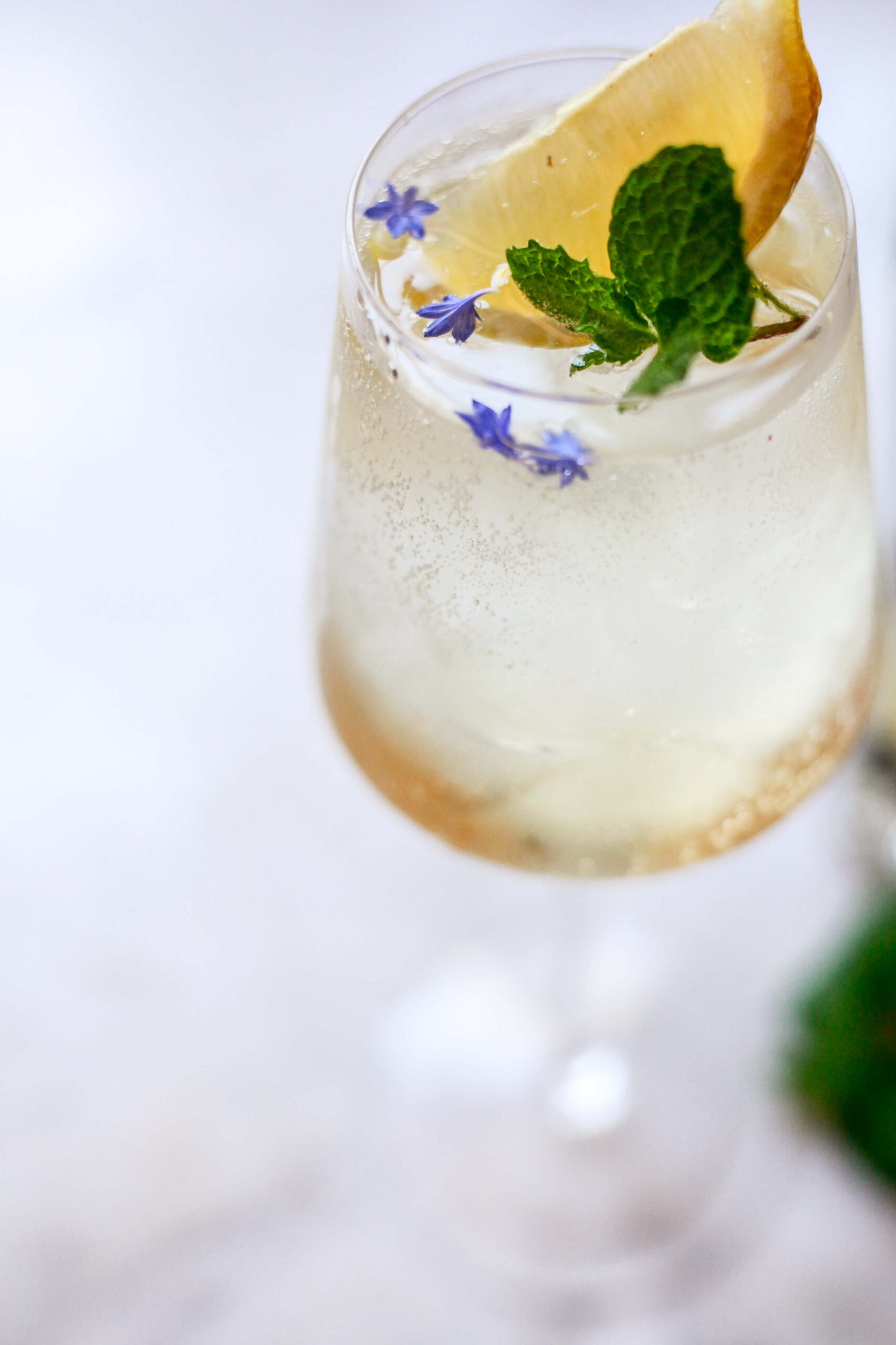
This is one of those cocktails that pairs beautifully with food. A few of my favorite pairings:
- Light appetizers → bruschetta, goat cheese crostini, or a simple caprese salad.
- Charcuterie → a mix of cheeses, olives, and crackers keeps the flavors balanced.
- Seafood → smoked salmon, shrimp cocktail, or oysters make it feel extra celebratory.
- Dessert → lemon sorbet or fresh fruit tarts to echo the bright flavors in the glass.
Why You’ll Love It
The Hugo Spritz is one of those cocktails that looks impressive but takes only a minute to stir together. It’s refreshing without being overly sweet, fancy enough for a party, and simple enough for a weeknight happy hour at home.
Hugo Spritz

Ingredients
- 1 1/2 oz St‑Germain elderflower liqueur
- 2 oz dry Champagne or Prosecco
- 2 oz sparkling water
- 8-10 mint leaves
- Lime wedge for garnish
- Mint sprig for garnish
Instructions
- Fill a large wine glass with ice.
- Add the St-Germain and the fresh mint leaves.
- Pour in the Prosecco, then top with sparkling water.
- Give the drink a gentle stir so everything blends together without losing the bubbles.
- Garnish with a lime wedge and a fresh sprig of mint. Sip and enjoy!
Notes
Nutrition Information:
Yield: 1 Serving Size: 1 glassAmount Per Serving: Calories: 145


